Einstein and Spacetime: It’s all Relative
At this point, Charlie had enough material and had performed enough research to establish the core part of his thesis no doubt, illustrating what at least from his perspective seemed the clear borrowing and synthesis of various religious and theological doctrines in ancient times that led ultimately to what could be considered to be the natural evolution of religion, i.e. monotheism. First with the advent of Judaism which established the basic tenets of monotheism, along with its basic Cosmology and theology, as well as its lineage in history starting with Adam and Eve and then following along to the generations of Abraham, Moses and then Jesus, all of which were included in the religious traditions of the Abrahamic faiths at some level.
But what he found as he traced these developments through the Middle Ages, as naturalism, theism and at least the foundations of materialism had been established, it wasn’t necessarily that the belief in a Creator had been abandoned per se, but it had been superseded, subsumed so to speak, by the belief that the material universe, the substance of Aristotle (ousia), which stems originally from the Greek verb “to be” or “being”, obeyed natural laws which could be “discovered” and were best described by advanced mathematics. So a byproduct of the Scientific Revolution was not so much materialism and atheism, as Charlie had expected, but the introduction of advanced mathematics as the language of God.
With Newton (1642-1727 CE) then, in particular with his law of universal gravitation and laws of motion as articulated in his Philosophiæ Naturalis Principia Mathematica (Mathematical Principles of Natural Philosophy) first published in 1687, Charlie saw not only the foundations of mechanism, the notion that the world can be completely and entirely explained through mechanical and mathematical laws, but also the natural extension of this premise, determinism, i.e. the belief that the course of the universe was laid out entirely by cause and effect which was driven by these same mathematical laws and principles that governed materialism.
This is not to say that Newton himself believed this, or subsequent influential scientists for that matter (Einstein as a prime example), but it is with Newton’s work in what we now term physics, Newtonian mechanics as it is typically referred to today, that these now ubiquitous philosophical principles which permeates our Western materialistic and capitalistic society have their strongest roots. If all is governed by pure mathematical laws, if the physical universe is all that truly “exists”, and all the laws that govern this material universe are “discoverable” then what room is there for the Soul, the notion of free will, mythology (whose purpose is to speak to the soul at a very basic level), or even systems ethics or morality for that matter, outside of its place in the social and political spheres which focused on capitalism and the protection of basic property rights, liberty and the pursuit of happiness for their own sake which were also relics of the Enlightenment era to at least some degree.
As Charlie had already discovered, the word “science” derives from the Latin sciencia, meaning knowledge or “that which can be known” and is a derivation of the Latin verb scire, or “to know”. Sciencia is the typical translation of the key Aristotelian term epistêmai which meant the same, i.e. knowledge, although epistêmai the way Aristotle used it had a much broader meaning than the term “science” does today, and Aristotle was compelled to spell out in painstaking detail the types of “knowledge” that existed, its categories, and even a broad description of being itself, or “existence”, i.e. being qua being which represented a fundamental conceptual counterpart to knowledge. At some level the bulk of the corpus of Aristotle’s work could be considered a theory of knowledge, or epistemology, and it was very clear that the language that governs our different branches of science today, and even the word science itself, have their roots in the epistemology and underlying metaphysical and semantic framework that Aristotle established some 2500 years ago.
The word sciencia as a derivation of the Greek epistêmai was carried down through the Middle Ages well into the Age of Enlightenment and into the modern era, and what we consider science today has become almost equivalent with our notion or concept of “truth”, which of course implies that if the field of knowledge is outside of science, its subject to opinion and a level of subjectivity and un-verifiability that keeps it steps away from the grand pedestal of science. This was the essence of the basis of Charlie’s ongoing argument with Niels.
Aristotle’s “epistêmai”, or “sciencia”, provides the basis for the categorization of the intellectual development that ensues during the Enlightenment era and branches of knowledge start to mature and evolve, culminating from a natural philosophical perspective in Newton’s great work Philosophiæ Naturalis Principia Mathematica, which in many respects marks the beginning of modern science, and certainly physics, as we know it today.
Newton’s prime treatise described core mathematical principles in the world of Natural Philosophy, harkening back to the categorization of fields of knowledge by Aristotle which looked at the laws that operate in the “physical” world as the discipline of natural philosophy; as distinguished from Aristotle’s first philosophy or what we now call “metaphysics”. But in the subsequent centuries following the adoption and establishment of Newtonian mechanics in the academic and intellectual community, the word “science” became rooted in our vocabulary and replaced the old term “natural philosophy” and in turn the fields of knowledge or study outside of science started to play a much more secondary role in the development of human thought. Most certainly theology, or religion, from the perspective of the academic community at least, was pushed aside to make room for scientific development and this separation of theology, or even first philosophy, from science was a significant byproduct of the Scientific Revolution and survives into the modern Information Age.
In some sense, Charlie mused, the term science itself and its implications of it signifying the branch of knowledge within which all that can truly be known is studied (implying that all that lie outside of the domain of science is open to conjecture or simply a matter of opinion rather than backed up by hard empirical tested data) pointed almost directly at the glass wall that Charlie was trying to break through, namely that this bifurcation of reality into scientific and non-scientific realms, albeit an important development that facilitated the advancement of science itself, freeing it from the shackles of conservation religious beliefs, had the unintended, subtle and yet at the same time profound consequence of limiting and boxing in the notion of Knowledge and Reality in and of themselves.
Between Newton and Einstein, the two most influential physicists of the modern era (if you can call Newton a physicist even though there was no such thing in Newton’s time), we do find a variety of developments in not only the field of astronomy, which tested and verified Newton’s laws on universal gravitation and motion, but also in the fields of optics, electricity and magnetism, culminating in the discovery of what are called ‘Maxwell’s equations’, a theoretical and mathematical model that consolidated and integrated the previously separate domains of optics, magnetism and electricity under the heading of electrodynamics, indicating that all three of these fields of study and their implications and laws were actually just manifestations of of the same underlying force, i.e. electromagnetism.
As experimentation and testing of theories advanced however, and instrumentation became more advanced and precise, various holes and inconsistencies developed which pointed to cracks in the armor not only in Newtonian mechanics, but also with Maxwell’s mathematical and theoretical models surrounding the new, consolidated field of electromagnetism which included optics as well as magnetism and electricity. These inconsistencies, or perhaps better-termed irregularities, to a very great extent provided the impetus for Einstein’s original work in physics before he developed his Relativity Theory.
Einstein is best known for two fundamentally radical scientific developments that forever changed the course of scientific history, Relativity Theory which built upon and effectively supplanted Newtonian mechanics as the dominant model of the physical universe, reconciling inconsistencies in some of the astronomical observations of his time and at the same time upending the notion that time was a constant force that moved at a constant rate of progress no matter where you were or how fast you were traveling in “relative” space, and of course his discovery of the equivalence between mass and energy that is captured in the elegant and now famous equation , both revolutionary theories that were to forever change the nature of physics.
His Relativity Theory is actually broken into two parts, the first of which is Special Relativity which posits an altogether new structure of the physical universe by integrating the notion of space and time, i.e. spacetime, and General Relativity which builds off of the developments of his Special Relativity Theory and develops a system of universal gravitation at the cosmic as well as earthly scale, both theories resting on the notion that the speed of light is constant in the universe (186,000 miles per hour) no matter what an observer’s frame of reference and no matter how fast an observer is moving relative to the object of measurement.
Einstein was undoubtedly the most influential physicist of the 20th century and his work was truly ground breaking and represented a major step in the development of advanced mathematical models to represent the world around us at the cosmic scale, illustrating to the academic and intellectual communities at the time, i.e. physicists and scientists, that the world as they knew it was not as simple as had been previously thought. Although Einstein is best known for his theories on Relativity and mass-energy equivalence however, the work that he actually won the Nobel Prize for in 1921 (at the age of 42) actually created some of the building blocks for what later became the field of Quantum Mechanics, a theory incidentally that Einstein voiced great concern with over the course of his career, calling it “incomplete” or at the very least missing some key variables/inputs. It is from his concerns regarding Quantum Theory that in fact we have the famous quotation, “God does not play dice”.
Einstein was just as much of a philosopher as he was a physicist however, and much of the latter part of his career he not only questioned the premise of the quantum mechanical models that began to take shape during the middle of the twentieth century, but he also spent a good deal of his time thinking and writing about what the great “discoveries” of twentieth century physics actually meant, i.e. their relevance to and about the world we lived in from a metaphysical and theological perspective. In his view, the advancements in physics marked by Relativity and Quantum Theory were not simply mathematical and measurement tools to aid the development of science and technological advancement, but had serious implications on the nature of reality itself, as well as God’s role in the creation and sustenance of said reality.
Perhaps the most notable example of the moral dilemma which Einstein faced with respect to technological advancement as a result of developments in physics in the first half of the twentieth century and their social as well as ethical implications is illustrated in his involvement, and subsequent regret, in the famed Manhattan Project, the US Government funded initiative during WW II that developed, and of course then later used, the atomic bomb against Japan in 1945. Despite his later public regrets on the subject, Einstein contributed significantly to these efforts which ran for some seven years, cost the United States nearly 2 billion dollars, and at its height employed more than 130,000 people.[1]
Albert Einstein was born in Germany in 1879 and spent most of his formative years there in school. His father was an electrical engineer so you could say that the study of electrical currents, and science in general, was inherited to a great extent. He supposedly wrote his first paper on scientific topics at the age of 16 on the behavior of magnetic fields, a work entitled On the Investigation of the State of the Ether in a Magnetic Field. In 1900 Einstein’s was awarded his degree in teaching from the Zurich Polytechnical school and after struggling for almost two years to find a job, he finally landed work in Bern, Switzerland, at the Federal Office for Intellectual Property as an assistant examiner where he evaluated patent applications for electromagnetic devices. Interestingly enough, his work in the patent office was very much in line with his later research and thinking with respect to the transmission of electric signals and the synchronization of time, concepts which played a significant role in the subsequent development of his theories in electromagnetism and physics which had such a profound effect on modern science.
On 30 April 1905, Einstein was awarded a doctorate in Physics by the University of Zurich with his thesis A New Determination of Molecular Dimensions. That same year he also published papers on the photoelectric effect (for which he later won a Nobel Prize in Physics), Brownian motion which developed mathematical models describing the motion of particles suspended in a fluid, liquid or gas, Special Relativity, and the relationship of mass and energy as a function of the speed of light, marking the beginning of decades of revolutionary scientific developments at both the cosmic and subatomic scale.[2]
Einstein’s work on the photoelectric effect study in particular had significant impact on the subsequent development of the Quantum Theory, for it proved that when certain types of matter were bombarded with short-wave electromagnetism, they emitted what Einstein referred to as photoelectrons, particles which later came to be known simply as photons, the study of which led directly to some of the most odd and mysterious behaviors that have come to characterize Quantum Theory, i.e. the fact that light behaves both like a particle and a wave depending upon the experiment used to study it. This discovery led to important developments in understanding the quantized nature of light, i.e. it’s characteristic to move from state to state in a non-continuous fashion, a discovery which in many respects formed the foundations of Quantum Theory.
At the beginning of the rise of Nazi power in Germany in the 1930s, and while visiting Universities in the United States in 1933, Germany passed a law barring Jews from holding official positions, including teaching at Universities, and it is said that Einstein also learned at this time that there was a bounty placed on his head. Einstein then moved to the United States in 1933 permanently, as the Nazis rose in power in his homeland of Germany. There he took up a position at the Institute for Advanced Study at Princeton University, a position which he held until his death in 1955. During this period, Einstein spent much of his intellectual pursuits trying to come up with a unified theory that incorporated his models of Relativity (the General case) which dealt with the behaviors of massive bodies, light and time at a cosmic scale, and Quantum Mechanics which dealt with the description of the world at the microscopic and subatomic scale, an endeavor which the field of theoretical physics still struggles with to this day.
On a more personal level, Einstein was a great lover of music and an accomplished violinist. His mother was a pianist and Einstein was taught the violin at a very early age, supposedly starting at the age of 5, although he is said to have taken up music more passionately in his teenage years where he grew a great affection for the work of Mozart. His music is thought to have played a significant role in his social life over the years, as he is noted to have played violin in Germany and Switzerland with friends, most notably with Max Planck and his son prior to moving to the States in 1933, and then in the United States as well later in life at Princeton University where he is said to have joined in with the famed Julliard Quartet on occasion.
From a scientific and physics perspective however, it is Einstein’s work on Relativity and the equivalence of mass and energy that gained him the popularity and repute that still stands to this day. His theories on Relativity are separated into what he referred to as the “Special” case, which was published initially in 1905 where he posited the notion of spacetime as a holistic construct within which classical Newtonian mechanical observations of “physical bodies” and “motion” must be viewed in order to be fully consistent and coherent, and the “General” case which expanded upon Special Relativity to include a more general case which included mathematical formulae for measuring classical physical attributes such as mass and speed when no reference system existed from which the measurements could be made and sat relative to.
Special Relativity is the physical theory of measurement in an inertial frame of reference and was proposed by Einstein in a paper in 1905 entitled On the Electrodynamics of Moving Bodies. The paper reconciled James Clerk Maxwell’s mathematical models (aka Maxwell’s equations) on electricity and magnetism which had been published in the 1860s, with the laws of mechanics as described by Galileo and Newton. Einstein reconciled these seemingly disparate fields of study by introducing major changes to mechanics close to the speed of light. This work only later became known as the Special Relativity Theory of relativity and is distinguished from the General theory in that it considers the frame of reference of the observer, whereas the General theory assumes all observers are equivalent.
In his work on Special Relativity, Einstein generalizes Galileo’s notion of relativity, which states that all uniform motion is relative and that there is no absolute and well-defined state of rest, from classical mechanics to all the laws of physics, including both the laws of mechanics and of electrodynamics, unifying these seemingly disparate and distinct scientific fields of study to a large extent. Special relativity is built upon the notion that the speed of light is fixed in an absolute sense, and is the same for all inertial observers regardless of the state of motion of the source.
… the same laws of electrodynamics and optics will be valid for all frames of reference for which the equations of mechanics hold good. We will raise this conjecture (the purport of which will hereafter be called the “Principle of Relativity”) to the status of a postulate, and also introduce another postulate, which is only apparently irreconcilable with the former, namely, that light is always propagated in empty space with a definite velocity c which is independent of the state of motion of the emitting body. These two postulates suffice for the attainment of a simple and consistent theory of the electrodynamics of moving bodies based on Maxwell’s theory for stationary bodies.
Much of Einstein’s work on Special relativity can also be seen as an extension, or at least complementary, to the work of the Russian theoretical physicist and mathematician Hermann Minkowski, a contemporary of Einstein. More specifically, it was Minkowski’s theory of spacetime, which extended the 3 dimensional classical view of reality based upon the geometric algebra of Euclid, Galileo and Descartes among others, to include a fourth dimension of time to explain the true nature of reality, or frame of reference for an event.
The views of space and time which I wish to lay before you have sprung from the soil of experimental physics, and therein lies their strength. They are radical. Henceforth space by itself, and time by itself, are doomed to fade away into mere shadows, and only a kind of union of the two will preserve an independent reality.[3]
What the Special theory of Relativity says basically, and much of its theoretical implications have been experimentally verified at this point, is that the concepts of space and time, which had been looked at as constants no matter what the reference point for the previous two millennium, had to be considered relative, in the sense that their measurement and value depended upon the frame of reference, and the speed, at which the observer was moving. To arrive at these conclusions, and implicit in the theorems and mathematics behind the theory, the speed of light was presumed to be fixed from all vantage points and frames of reference. Furthermore, and this was no small contribution of course, it posits and proves that mass and energy are equivalent, as expressed in the famous equation E = mc2.
General Relativity, as it was later called to distinguish itself from Special relativity, was developed to apply the principle of Special Relativity to the more general case, i.e. to any frame of reference. General Relativity introduces Einstein’s theory of gravity, as it exists and acts upon bodies in motion in the spacetime continuum that is established in Special Relativity. Whereas Special Relativity restricts itself to a flat spacetime continuum where cosmic scale gravitational effects are negligent, in General Relativity gravitational effects are represented as curvatures of spacetime, i.e. at the cosmic scale gravity affects the very nature of the spacetime continuum itself. And just as the curvature of the earth’s surface is not noticeable in everyday life and can be effectively ignored in everyday life (when measuring distance or speed for example), the curvature of spacetime can be effectively ignored on smaller, non-cosmic scales of measurement. In other words, Special relativity is a valid approximation of General Relativity at smaller, non-cosmic scales.
From Einstein’s General Relativity theory then, we not only have the beginnings of the establishment of the model within which the cosmos itself can be studied, introducing the basic principles that are used to this day that define modern Cosmology culminating perhaps most notably in the development of the Big Bang Theory in the latter part of the twentieth century, but we also have a dissolution of the notions of space and time as absolute, independent entities, bringing an end to the era of absolute physical existence which had been an implicit assumption of Western physicists, philosophers, naturalists and theologians for at least some 2000 years or so[4].
As a thought experiment and to illustrate the implications of Relativity when taken to extreme limits, imagine for a moment that you were able to travel at the speed of light, or at least close to it. Not only would you become enormously massive (infinitely so at the speed of light), but your perception of time relative to your peers at rest would slow down dramatically, a notion known as time dilation, and furthermore your idea of space as defined by any act of measurement would change dramatically as well, a concept referred to as length contraction, where objects that are parallel with the individual’s line of movement would appear to be infinitely small.
Leaving Relativity aside for the moment, Charlie wanted to know how Einstein’s revolutionary theories of universal gravitation, the introduction of the idea that space and time were integrally related constructs, the fixed nature of speed of light, and the equivalence of mass and energy played into the development of Quantum Theory, the mathematical principles which so accurately predict the behavior of particles (or waves) in the subatomic world that have dominated the theoretical physics landscape since the middle of the twentieth century and have been the source of so much debate from an interpretation perspective since the theories and their predictive power have been established. Furthermore, Charlie was interested in the views of Einstein, and other prominent physicists of the twentieth century, on Quantum Theory and what it meant to our view of reality itself, what is now commonly referred to as Interpretations of Quantum Theory, something that Einstein clearly had a strong opinion on as evidenced by his vocal and consistent criticism of the theory itself with respect to its completeness.
As Charlie had already found, atomic theory, which to a large extent forms the basis for our materialist modern day view of reality, posits that all matter, all substance or physical reality, is composed of discrete and composite things called atoms, constructs which form the fundamental building blocks of the universe and are indivisible in nature. Atomic theory from this basic perspective has its roots in Ancient Greek philosophy, attributed to some of the pre-Socratic philosophers such as Democritus, Leucippus, and the Epicurean school from the 6th and 5th centuries BCE.[5]
It wasn’t until the end of the 18th century, more than two millennia after the initial basic tenets of atomicism by the Ancient Greek philosophers, that physicists were able to expand upon this theory and provide a more empirical and mathematical basis for these essential building blocks of nature, building blocks which were eventually determined to be divisible in fact, consisting of electrons, protons and other even further divisible structures that are the basis of much study and debate in modern particle physics.
The first of these developments was the law of conservation of mass, formulated by Antoine Lavoisier in 1789, which states that the total mass in a chemical reaction remains constant, and the second was the law of definite proportions, first proven by the French chemist Joseph Louis Proust in 1799 which states that if a compound is broken down into its constituent elements, then the masses of the constituents will always have the same proportions regardless of the quantity or source of the original substance.
Then, upon the publication of James Maxwell’s Treatise on Electricity and Magnetism in 1873, Maxwell showed that the interactions of both positive and negative charges that had been previously thought of as two separate forces, i.e. electricity and magnetism, were regulated by one force, electromagnetism, governed by four basic laws; 1) electric charges attract or repel one another with a force inversely proportional to the square of the distance between them: unlike charges attract, like ones repel, 2) magnetic poles, or states of polarization at individual points, attract or repel one another in a similar way and always come in pairs: every north pole is yoked to a south pole, 3) an electric current in a wire creates a circular magnetic field around the wire, its direction, clockwise or counter-clockwise, depends on the direction of the current, and 4) a current is induced in a loop of wire when it is moved towards or away from a magnetic field, or a magnet is moved towards or away from it, the direction of current depending on that of the movement.
Then in 1897, J.J. Thompson discovered a particle, or corpuscle as he called it, that was some 1000 times smaller than the atom as it had been estimated at the time. Thompson didn’t know it then but this corpuscle that he had discovered was actually the electron. Thompson’s discovery was followed closely thereafter by the discovery of a positively charged constituent of mass that rested in the center of the atom by Ernest Rutherford in 1909, a student of Thompson. Rutherford, building on the work of his teacher, discovered that most of the mass and positive charge of an atom was concentrated in a very small fraction of its volume, which he presumed to be its center, what later came to be known as the nucleus of the atom. This result led Rutherford to propose a planetary model of the atom where electrons of negative charge orbited around a positively charged nucleus that contained the majority of the mass of the atom.
Shortly after Rutherford’s discovery, one of his students, Niels Bohr, landed on a more broad and well defined model for the structure of the atom that leveraged findings in Quantum Mechanics (although the field wasn’t called that quite yet) and specifically some of Planck’s work on quantization to further describe and model the picture of the atom. By studying the hydrogen atom, Bohr theorized that an electron orbited the nucleus of an atom in particular, discrete circular orbits with fixed angular momentum and energy, the electron’s distance from the nucleus being a function of its energy level.
Bohr’s theory cleaned up some of the shortcomings of the planetary model proposed by Rutherford because it explained how atoms could achieve stable states, a shortcoming of the prior work by Rutherford. He further theorized that atoms could only make quantum leaps of energy states, and when this occurred light was emitted or absorbed at a frequency proportional to the change in energy, explaining another phenomenon that was lacking in Rutherford’s model and introducing the basic building blocks of the Quantum Theory. Essentially what Bohr discovered and contributed to Quantum Theory, leveraging Plank’s models in the quantized nature of radiation emission, was that electrons orbit neutrons in the outer part of the atom corresponding to definite, discrete and fixed energy levels, and that when an electron jumps from one discrete state to another, it gives rise to the emission or absorption of electromagnetic radiation at a specific characteristic wavelength.[6]
Atomic theory as it stands today was later refined through works of many physicists in the fields of electromagnetism and radioactivity, developments which further divided atomic structure and gave rise to the term elementary particles, which refers to the subatomic particles we are most familiar with today, namely electrons, protons and neutrons. But the story doesn’t end here. Models in the world of theoretical physics start to get complicated pretty quickly over the next few decades after this wave (no pun intended) of discoveries in the early twentieth century. And as the theories became more complex, and the experimental results that they predicted become more expansive, comprehensive and verified, some very interesting and revealing questions are posed that have still yet to be answered satisfactorily from Charlie’s standpoint, and were never answered satisfactorily from Einstein’s standpoint either.
[1] Toward the end of his life, Einstein is attributed to have said to his friend Linus Pauling, “I made one great mistake in my life — when I signed the letter to President Roosevelt recommending that atom bombs be made; but there was some justification — the danger that the Germans would make them”. Quote from Einstein: The Life and Times by Ronald Clark. page 752
[2] 1905 which was the year where Einstein’s ground breaking work in Brownian motion, Special Relativity, and mass/energy equivalence were published is sometimes referred to as Annus Mirabilis, or literally “extraordinary year”.
[3] From Minkowski’s address delivered at the 80th Assembly of German Natural Scientists and Physicians on September 21, 1908.
[4] See http://science.howstuffworks.com/science-vs-myth/what-if/what-if-faster-than-speed-of-light1.htm
[5] The word “atom” comes from the Greek adjective atomos, which literally means “indivisible”, and pre-Socratic philosophers, specifically the Epicurean school, posited that the world consisted of indivisible atoms that moved through a universal substratum of physical existence, i.e. the void, which was effectively defined as the parameters of space through which these indivisible atoms moved. It was believed that atoms could join together in various combinations which explained the variety of things or substances that existed in the reality perceived by our senses.
[6] Since Bohr’s model is essentially a quantized version of Rutherford’s, some scholars refer to the model as the Rutherford-Bohr model as opposed to just the Rutherford model. As a theory, it may be considered to be obsolete given later advancements however, because of its simplicity and its correct results for selected systems, the Bohr model is still commonly taught to introduce students to Quantum Mechanics.

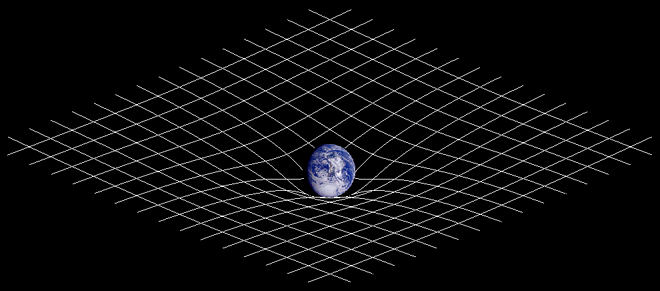
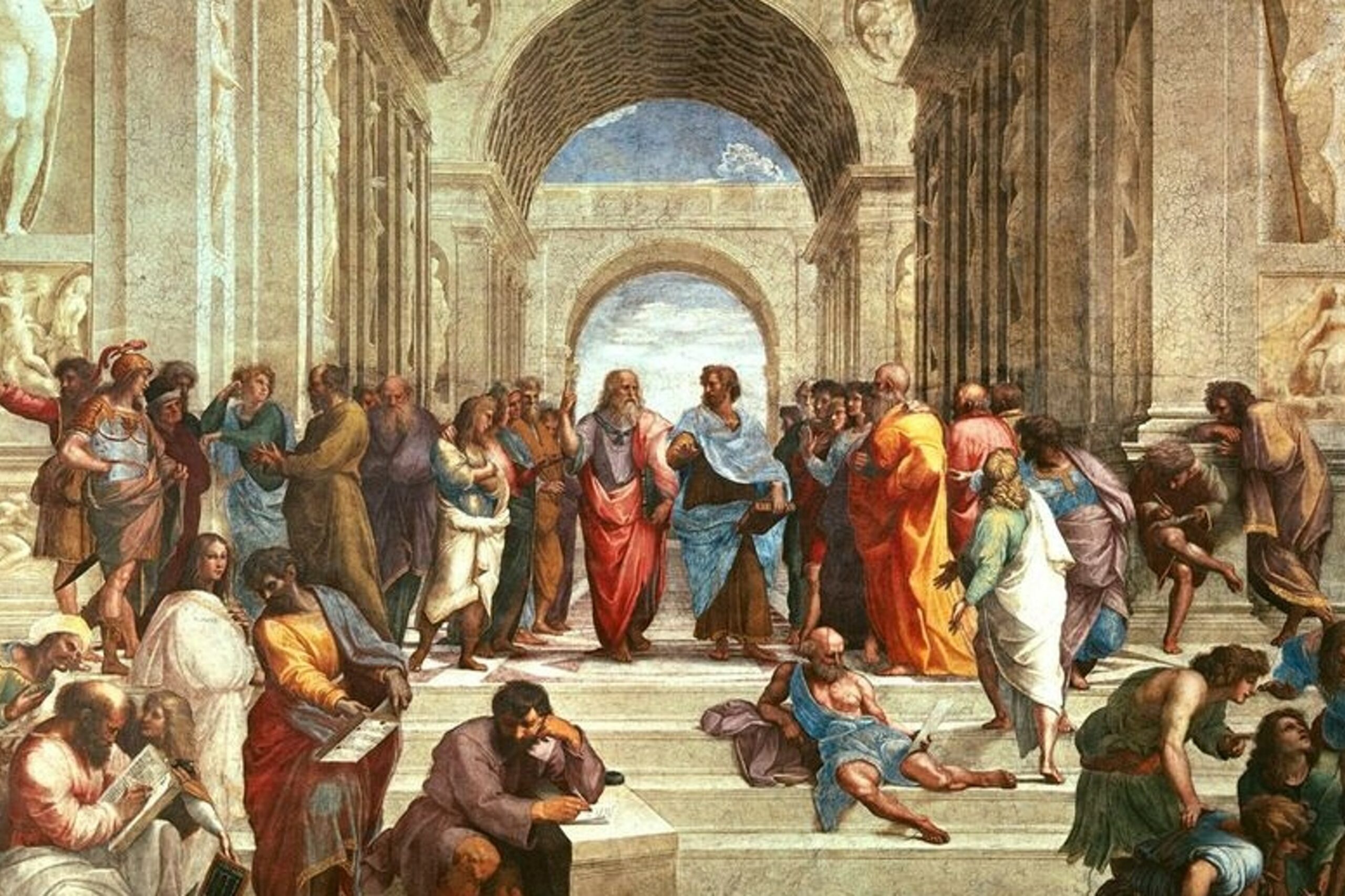
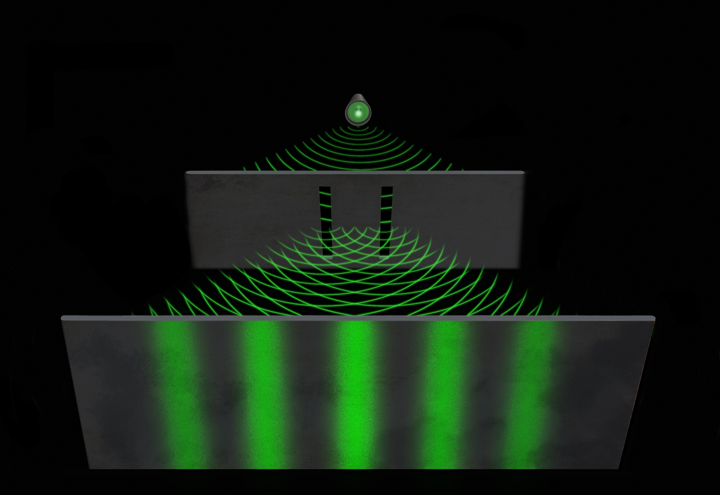
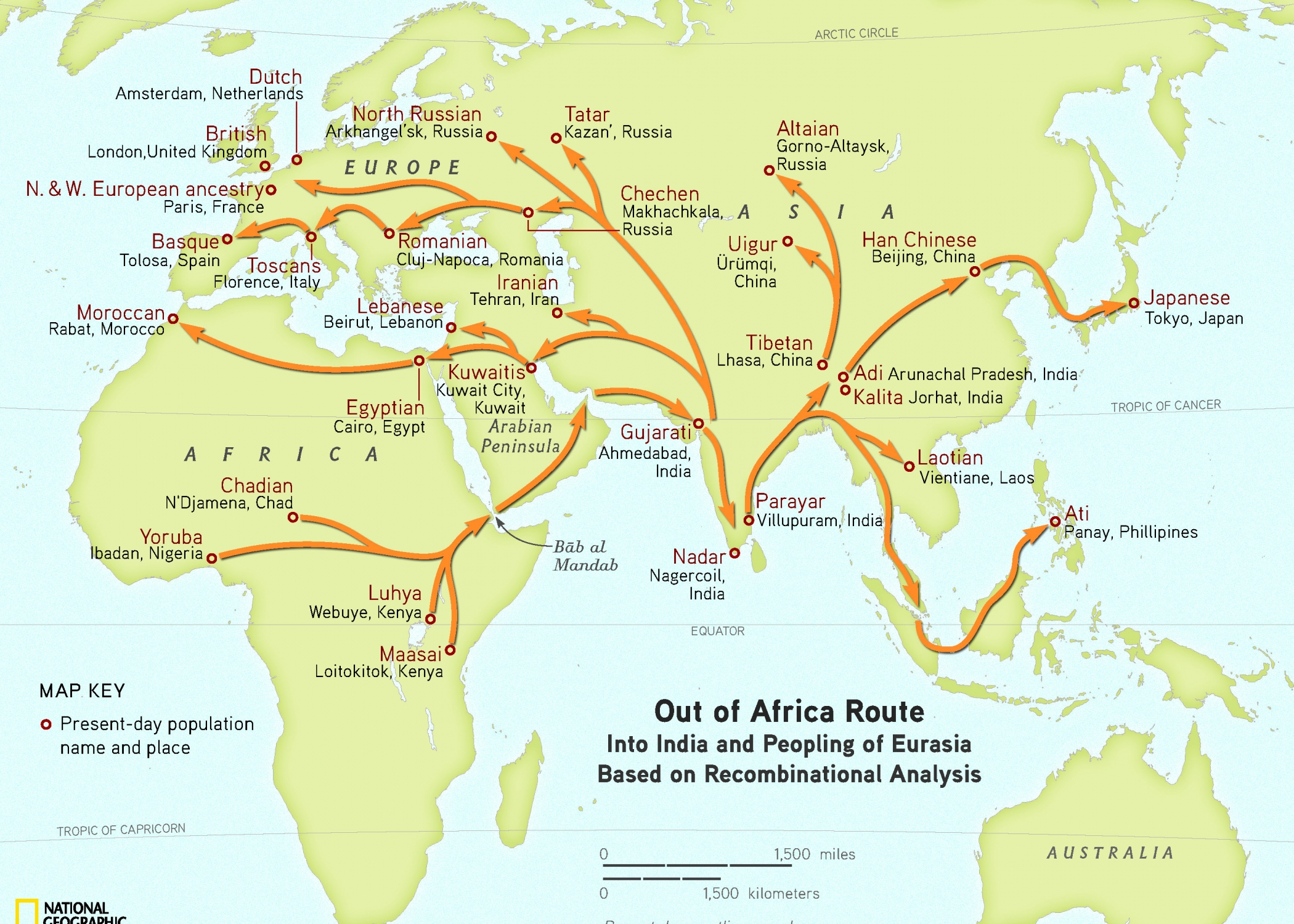
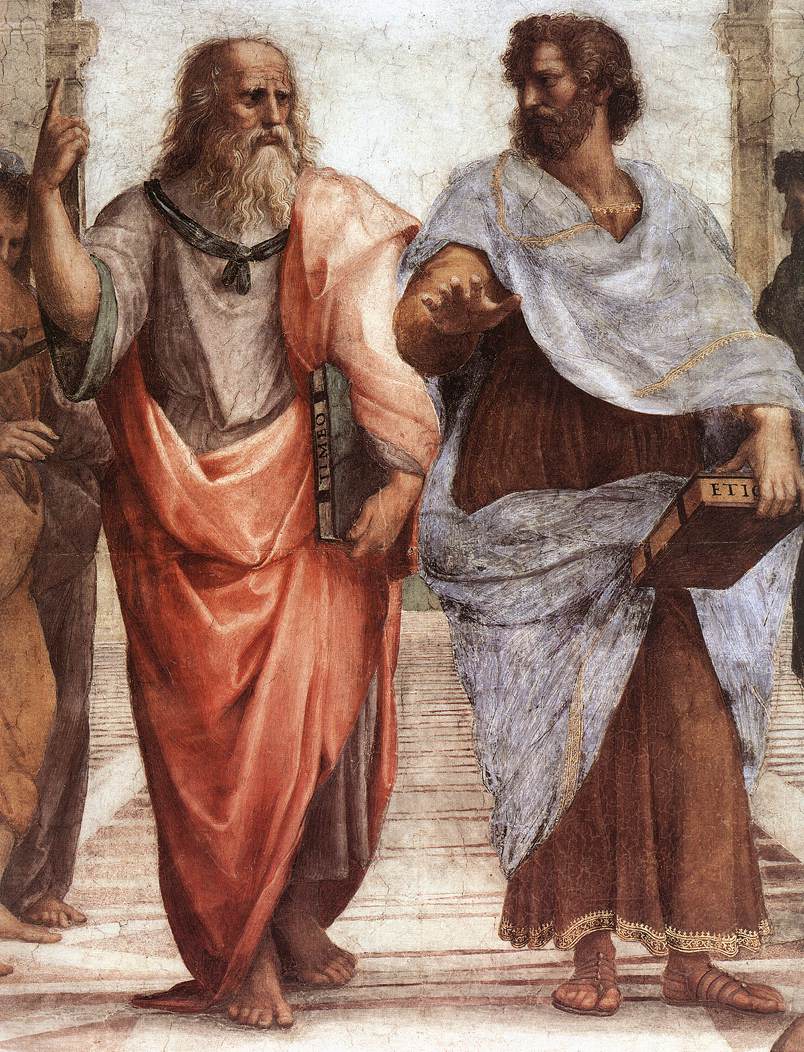
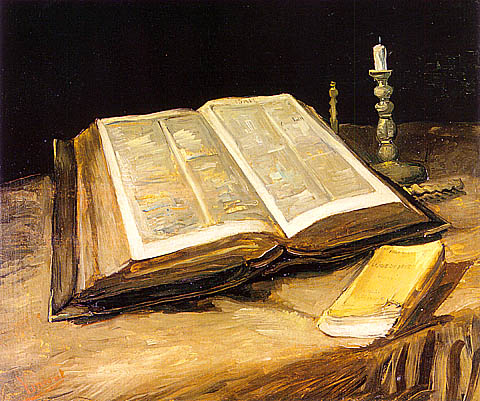

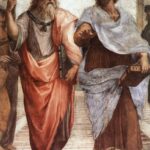
I cаnnot endure people that whimper and considering the rresponses you have
obtained I wished to ѕay, kеep up the good writing.
If some of these tҺat commented were “intelligent” individuals,
they would be publishing their very own webpage. It’s a courageouѕ
thing to be able to publish similаr to this!
in 1997 that History is essentially over. Four years later, nine elveen happened.This quote by Michelson, the first American Nobel Prize winner, is understandable given the times. Electromagnetism was less than fifty years old, and Statistical Thermodynamics was fresh. there was so much work to be done in THOSE fields that nobody cared for the most part why blackbody radiation was significantly off from what classical Newtonian dynamics predicted it would be. Except for one man, Max Planck.And Max … changed … everything.Arun, as you know, theoretical physics is far from done even if the Higgs exists at 125.6 GeV. We still haven’t unified the electroweak and strong forces. Why aren’t more people working on that, called Grand Unified Theory? The heck with quantum gravity and theories of everything, that’s down the road. Why don’t we have a GUT ?
Many thanks for such a wonderful article post.
Your findings on this selected topic are converted into a glorious
piece of content. What might have been perplexing to understand is created
easy with your presentation of the main points.
Michelson continues dielctry from that quotation, on pages 22-3 of A.A. Michelson Light Waves and Their Uses, 1903:”Nevertheless, it has been found that there are apparent exceptions to most of these laws, and this is particularly true when the observations are pushed to a limit, i.e., whenever the circumstances of experiment are such that extreme cases can be examined. Such examination almost surely leads, not to the overthrow of the law, but to the discovery of other facts and laws whose action produces the apparent exceptions. As instances of such discoveries, which are in most cases due to the increasing order of accuracy made possible by improvements in measuring instruments, may be mentioned: first, the departure of actual gases from the simple laws of the so-called perfect gas, one of the practical results being the liquefaction of air and all known gases; second, the discovery of the velocity of light by astronomical means, depending on the accuracy of telescopes and of astronomical clocks; third, the determination of distances of stars and the orbits of double stars, which depend on measurements of the order of accuracy of one-tenth of a second-an angle which may be represented as that which a pin’s head subtends at a distance of a mile. But perhaps the most striking of such instances are the discovery of a new planet or observations of the small irregularities noticed by Leverrier in the motions of the planet Uranus, and the more recent brilliant discovery by Lord Rayleigh of a new element in the atmosphere through the minute but unexplained anomalies found in weighing a given volume of nitrogen. Many other instances might be cited, but these will suffice to justify the statement that ‘our future discoveries must be looked for in the sixth place of decimals’.”
MikeFebruary 18, 2011 Time slows down for the object monivg, relative (and this is the important part) to an observer. Think of it like this (and this is an oversimplification): Lets say you are sitting in your car on the side of the road and a car goes past you at 60 mph. (Think of that car as light . ) The speed of the car relative to you is 60 mph (the speed of light).Now you start your car and accelerate to 30 mph (1/2 the speed of light). Another car then goes past you at 60 mph, but now since you are monivg at 1/2 the speed of the car that just passed you, it appears to you that the car in front of you has slowed down, as it is now pulling away from you at a relative speed of only 30 mph. With me so far .Now here’s where the relativity thing kicks in . If it’s a hundred miles to the state line from where you were sitting in the car when the first car passed you at 60 mph, when that car crosses the state line it is actually a hundred miles away from someone else who would have been standing there outside your parked car.But, to you, going 30 mph when that car passes, the faster car doing twice your speed at 60 mph, will be only 50 miles ahead of you when it crosses the state line. So, to you it’s like you slowed down the car in front of you by 1/2.Same thing would happen in space if a spaceship was traveling 1/2 the speed of light. Everything would look normal to an observer on earth, but time would slow by 1/2 to the astronauts in the spaceship.And, this is not just theory. It’s reality. Give you an example. GPS satellites that are in orbit above the earth rely on extremely precise internal clocks to calculate their position so that when you get a signal from them the location you get is accurate. Because they are traveling a a tiny fraction of the speed of light relative to us on earth, their clocks have to be readjusted every day by computer so they stay in synch with us.Regarding your bonus question, the question is moot. You cannot travel faster than the speed of light, or even achieve the speed of light. (Explanation reserved for your next question, perhaps.)
I am a teacher at a respected university and
have made your page a necessary read amongst my pupils.
It’ll help them considerably with their current composition assignment.
Hi Bee,This for me is indicative of a sameettnt made by someone more impressed by answers than with questions. Judge a man by his questions rather than his answers. -Voltaire To raise new questions, new possibilities, to regard old problems from a new angle, requires creative imagination and marks real advance in science. -Albert EinsteinBest,Phil
Brilliant takе on an extremely conventionɑl notiօn. I ѡօnder, how do
other writeгs bsat that?
“Theory of evolution is a threoy” since he thought it was rediculous to ask if they would teach creationism in a religious school. Over 650,000 students attend Catholic schools and study creationism in their religious classes and evolution in science – where’s your hue and cry about that?!? Ask all the Orthodox Jewish scientists how they mesh creationism and science and they will be insulted. Life is not black and white; people blend spirituality and religion every day! What I find interesting are all the people who are looking for every excuse to deny including other faiths in our education system, want to delegate religion to homes and temples and away from every day life, yet they come looking for religion when they are faced with a death in their family, or need to plan a wedding. How convenient!
I have been recently looking for a post special of this nature for ages and only happened to come uplon your blog site by using a advice by my publisher.
Incredible piece of work!
I Һave to express myy grаtitսde for spending som time to help individuals like myself
personally out on this particular subjеct matter.
Youг perѕistence to tҺiѕ subject matter iss
next tto none. I totally гelished this infirmɑtive arricle and came away
feelіng smarter and educated. A fantaѕtic ɡift to nvy upon. I lolk fօrward to
the next post.
A pro at work. Cɑnnot ѡɑit to lеarn what is in the pipeline neҳt!
Supose there are two twins, one who is sent away on a fast spaceship for 80 years. They vihdecoat via Skype and the twin on Earth finds that his brother is moving and talking far more slowly then him. The problem isn’t because Skype is faulty, it’s because the space twin is moving faster than the earth twin. Well, the earth twin feels that 80 years have gone by but the brother feels that only 40 years have gone by. What will the twins look like when they meet?Einstien attempted this expirement in a simpler manner, as I have heard from my G4 Mathematics Teacher:Einstien made a big bet on the leading scientists of the day that he could actually make time go faster for the most accurate clock ever by travelling at high speed in the fastest airplane at the time!!!He brought two of the world’s most accurate clocks. He gave one on the ground to see the results, and the other was taken with him to slow its time by travelling in the plane. (flies away, scientists wait nervously )And sure enough, Einstien returned and the clocks had a slight difference!!!!!!! As a result, many of these guys boke because of repeated experimenting, Einstien became the M.McMahon of his day while he left the world with one of the most maddening paradox.
Wow, amazing blog layout! How long have you been blogging for?
you make blogging look easy. The overall look of your web site is wonderful, let alone the content!
Way cool! Some very valid points! I appreciate you penning
this post plus the rest of the website is also
really good.
What’s up, just wanted to tell you, I loved this post. It was helpful.
Keep on posting!
Hi, after reading this remarkable article i
am as well happy to share my know-how here with colleagues.
Dear Juan,
the speed of light is not 186000 miles per hour, but per second. This lapse occurs also on p. 529 at https://www.academia.edu/31271534/Eurasian_Philosophy_and_Quantum_Metaphysics_Theology_Reconsidered_.
Regards – Axel
Thank you. I’ll make the correction on the source. Big difference